Applying Compute-proximal Energy Harvesting to Develop Self-Sustained Systems for Automobiles
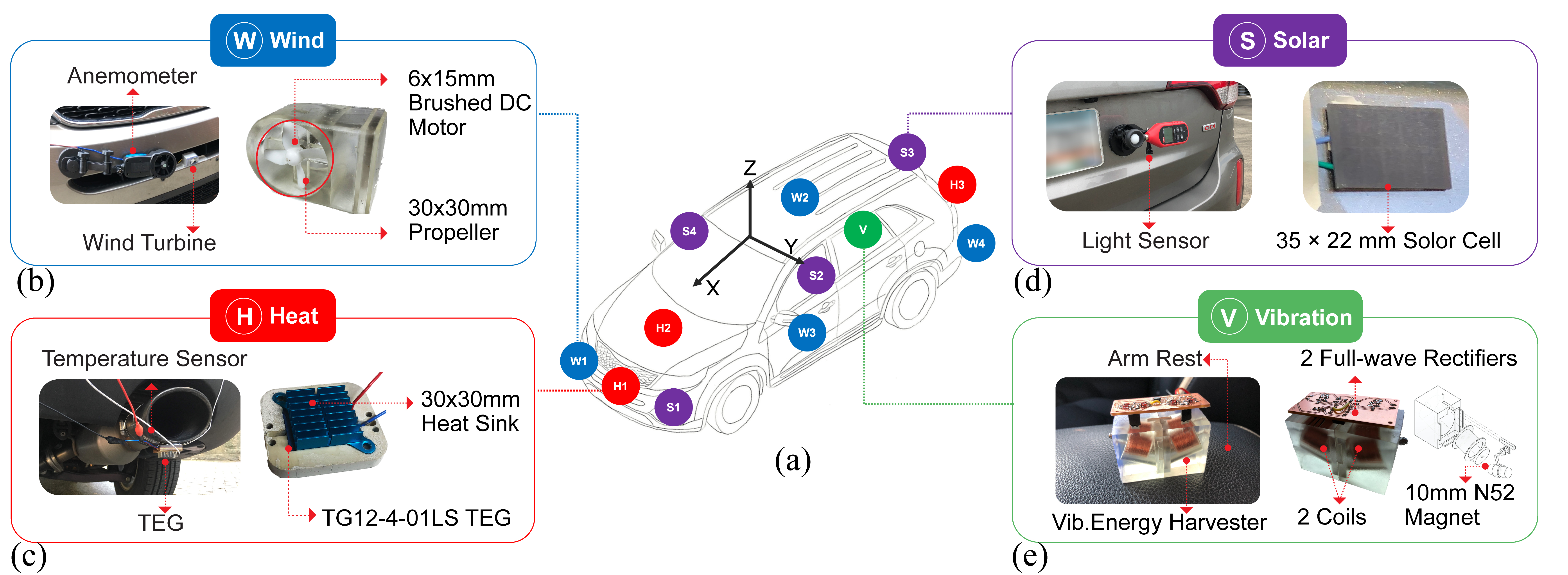
Figure 1: (a) Locations of each energy monitor and harvester (b) Anemometer and wind turbine at the front bumper, (c) Temperature sensor and thermoelectric generator at the exhaust muffler pipe, (d) light sensor and solar cell at the trunk door, and (e) Vibration energy harvester at the arm rest
A major cost, inconvenience, and source of failure for adding sensors and electronic accessories to automobiles is wiring the systems into the car's power supply. We propose an alternative approach, computer-proximal energy harvesting, which harvests power locally, so wiring is not needed.
In this research, we provide an overview of the principles and empirical evaluations for harvesting energy in and around the automobile exploring the role that wind, light, vibration, and heat can play in this process. (See Figure 1.)
To better explore these concepts, we demonstrate two prototypes—a thermoelectric energy-based parking assistant (RearSense), which is attached to the exhaust pipe, and a wind-powered external pedestrian display (PedDisplay), which is anchored to the front bumper of a car.
To repurpose energy harvesting technologies from a computing point of view in automotive domains, we present computer-proximal energy harvesting, an approach that emphasizes the development of energy harvesting hardware precisely where computing is needed, so the need of wiring can be eliminated.
In computer-proximal energy harvesting, compute can include sensing phenomena, executing instructions, actuating components, or communicating information. proximal means identifying the opportunistic energy sources for harvesting near the computing location.
In other words, under this concept, the purpose of energy harvesting is not to recharge the car's battery, but to start from the computing needs and to implement complete wireless, self-sustainable systems. How will computer-proximal energy harvesting change the future? Let's compare what can be happened with and without this concept.
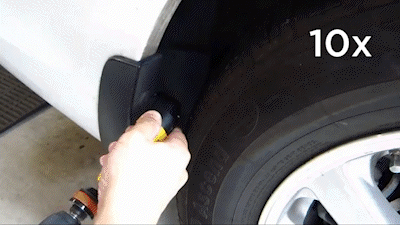
Without Computer-Proximal Energy Harvesting, wiring processes to install new devices require significant extra cost and inconvenience.
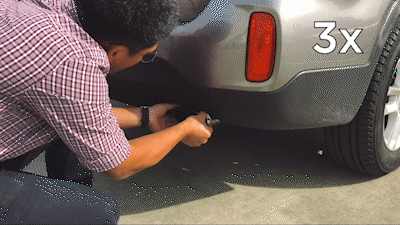
With Computer-Proximal Energy Harvesting, it identifies the untapped potential for developing self-sustained devices around the automobile while not being constrained by wire-based power issues.
Example #1 - RearSense
A thermoelectric energy-based parking assistant system at the exhaust pipe
Example #2 - PedDisplay
A wind-powered communication medium between a driver and pedestrians at the front of the car
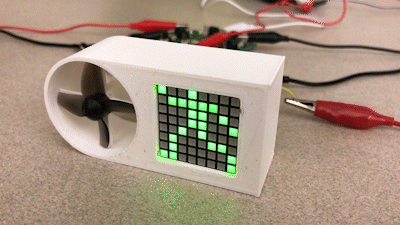
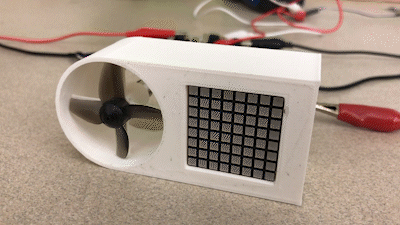
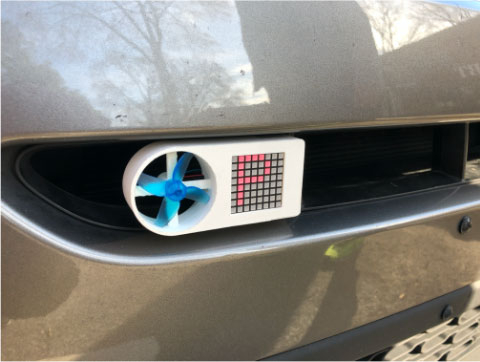
Installation Example
